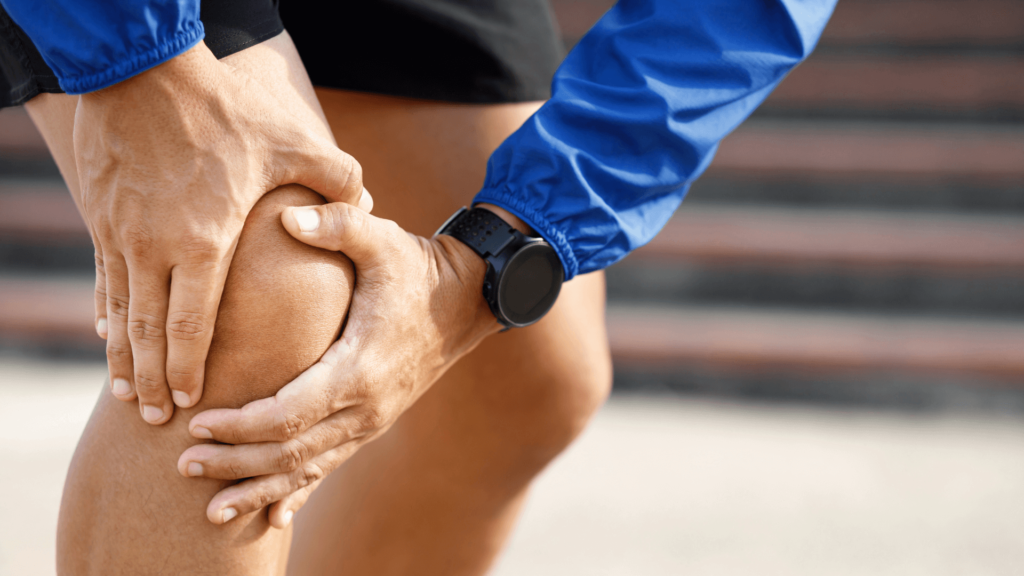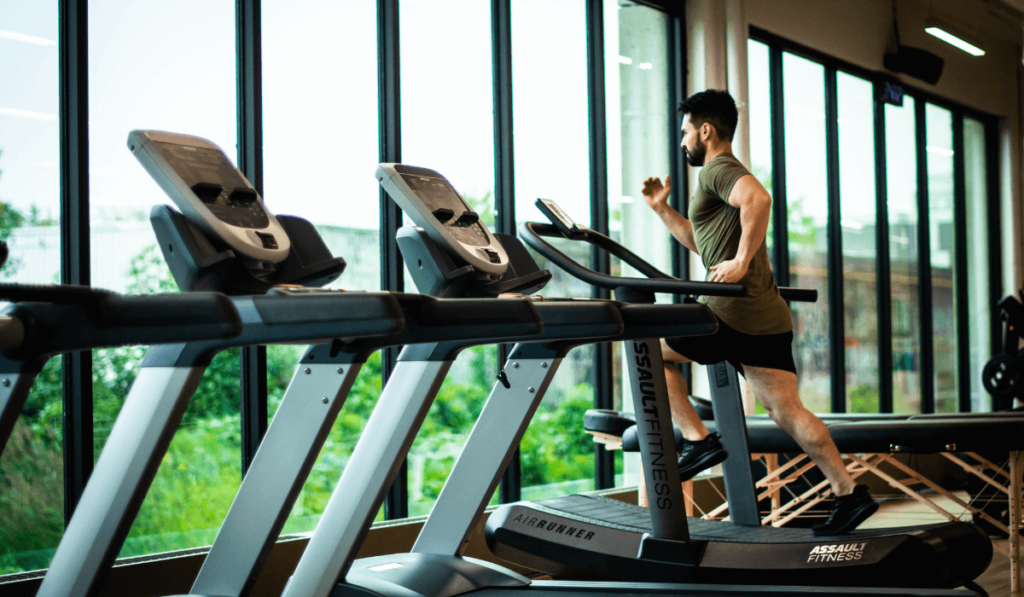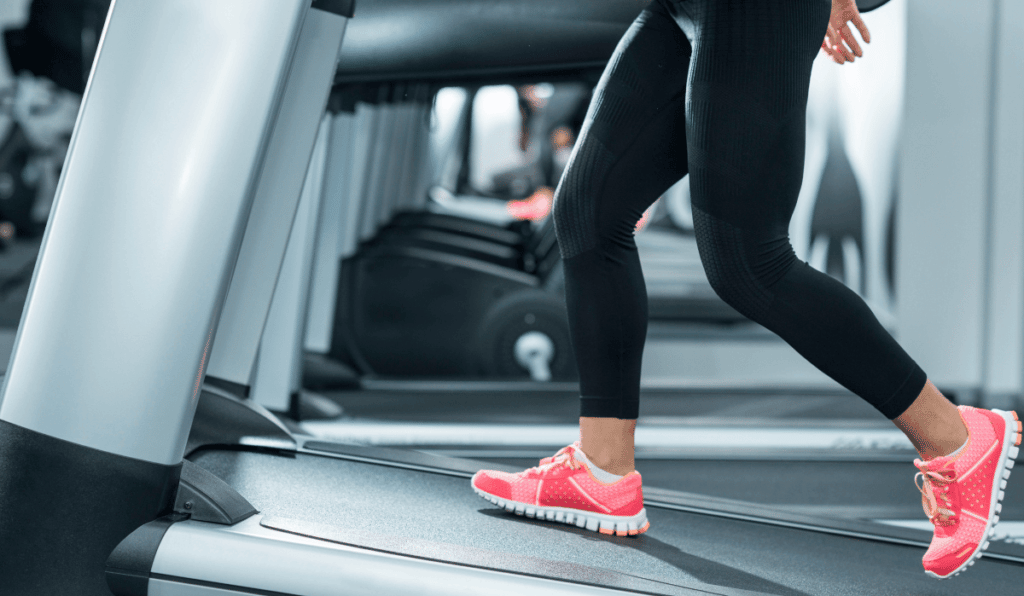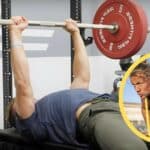The treadmill can be a lifesaver when you want to squeeze in a cardio workout, but the weather is not on your side, or you’re stuck at home taking care of your kids. However, running on a moving treadmill belt, particularly if it’s too fast for your fitness level, can impact your stride and overall running experience. Many experts have reported specific injury types in people who rely on the treadmill as their primary training ground.
Jump to:
Common Treadmill Injuries
Even though the treadmill is basically just a moving belt which you can use to reach your fitness goals, tone your legs and shed a few pounds, you can still injure yourself, even if you’re just walking on it.
Let’s take a look at some of the most common treadmill injuries and some great tips to help you stay safe when using this piece of exercise equipment.
Knee Pain

Knee pain is a common treadmill injury, as most people tend to hyperextend their knee. This essentially means that you are straightening your knees too much, or in other words, you’re “locking your knees”. Unfortunately, some people run in a hyperextended position because they are used to standing that way. By doing so, you’re pushing your knees beyond their normal range of motion, which can cause an injury.
Knee injuries can also occur as a result of putting too much pressure on the knee while walking or running on a treadmill, or from not keeping proper form. This might easily lead to sprained or twisted knees.
Foot Injuries
Foot injuries are the most common type of injury when using a treadmill. When you’re walking or running on a moving treadmill belt, it can be easy to lose your footing. In most cases, all it takes is just one missed step. The vast majority of foot injuries on treadmills come as a result of overusing your foot muscles.
Foot injuries might also occur due to wearing the wrong running shoes or having an improper running form. One of the most common foot problems when using a treadmill is plantar fasciitis, where you experience a severe pain in your feet and heels.
Hip Pain
Just like with knee and foot pain, most hip injuries are due to muscle overuse. If you’re experiencing hip pain, stop your activity and figure out what you are doing wrong. Fortunately, hip pain is one of the most common running injuries and can be easily treated if you detect the problem early on and don’t further aggravate it.
You might experience hip pain if you’re constantly using a treadmill, since walking or running on an incline can put extra stress on your hips. Hip injuries can also happen if you have an unnatural stride pattern or from overextending your legs.
Treadmill Falls
Go online, and you will stumble across various funny videos of people falling off the treadmill. Unfortunately, in some cases, these falls can result in serious injuries. Most treadmill falls happen due to simple mistakes such as a missed step, hopping on the treadmill when it’s on or drastically increasing the speed. As a matter of fact, data shows that more than 70% of treadmill injuries are a result of falls.
What’s more, your treadmill can even throw you into a wall, which means you could injure any part of your body. You are likely to suffer head trauma when you fall, as your head or face will likely hit the running belt. This injury mainly happens as a result of not allowing enough clearance space behind the treadmill, so people end up getting thrown into a wall.
For commercial gyms, the American Society for Testing and Materials recommends leaving at least six feet of clearance space behind a treadmill. This can be a great guiding point for home treadmills as well.
How to Prevent Treadmill-Related Injuries?

If a treadmill is an essential part of your running life, consider the following tips for keeping your body healthy and avoiding the most common treadmill-related injuries.
Warm Up and Cool Down
Cold muscles lack blood flow and are not very flexible, which is why it’s essential to warm up before running on a treadmill. To warm up properly, start walking slowly for 5-10 minutes and then do static stretches and various motion exercises.
After finishing using the treadmill, don’t forget to cool down your muscles to prevent injury. If you suddenly stop with activity, muscles quickly tighten. To cool down effectively, walk or run at a slower pace for the last 10% to 15% of your time spent on the treadmill. At the end, don’t forget to also stretch your legs, hips and lower back.
Check Your Posture

Maintaining proper posture is of great importance for adequate muscle conditioning. When running, it is essential for the whole body to be in a natural position and the joints should not be stressed more than they should be. To make the treadmill mimic the ground outside, use the incline setting at 2%. Running on a very flat treadmill is not good for the feet and legs.
Don’t Start with the Treadmill Moving
This might sound like a no-brainer, but make sure the treadmill is switched off before you get on it to avoid injuring yourself. If you’re working out in a gym, keep in mind that some people might forget to switch off the treadmill after they have finished using it, and sometimes it can be hard to see if the running belt is moving or not. So, make sure to always pay extra attention before getting on this exercise machine.
Change Intensity Gradually
After using the treadmill for a while, you might be tempted to increase the incline and speed to take your training to a new level, burn extra calories and avoid boredom. But keep in mind that it’s essential to start slow and increase your speed by 15% each week so that your body can get used to working out gradually. To minimize the risk of overuse injuries, it’s also a good idea to vary speed and incline occasionally.
Most treadmill-related injuries are usually caused by increasing incline or speed too quickly. If your body doesn’t feel right, and you think you overdid it, rest for a day.
Know Where the Safety Button Is
Nowadays, all modern treadmills have some sort of safety switch-off button that you can press to stop the machine from running in case of an emergency. In most treadmills, this safety button is in the form of a safety key. It’s always a good idea to locate this safety key before you start using the treadmill so that you can quickly use it if needed.
Don’t Overdo It
Whichever kinds of exercise you might be doing, make sure to always listen to your body. Most people who buy a treadmill for their home or join a gym are often eager to lose weight or boost their fitness level as soon as possible. There’s no denying the benefits of exercise make putting extra work in your training super rewarding, but this enthusiasm might also make people perform certain body moves that might result in strained muscles and a painful condition.
Pay close attention to how you feel; if you have consistent pain for several days, have it checked out. Your healthcare professional might prescribe you some over the counter pain medication. Always make sure to treat any painful symptoms you may have, so you don’t end up dealing with chronic pain.















